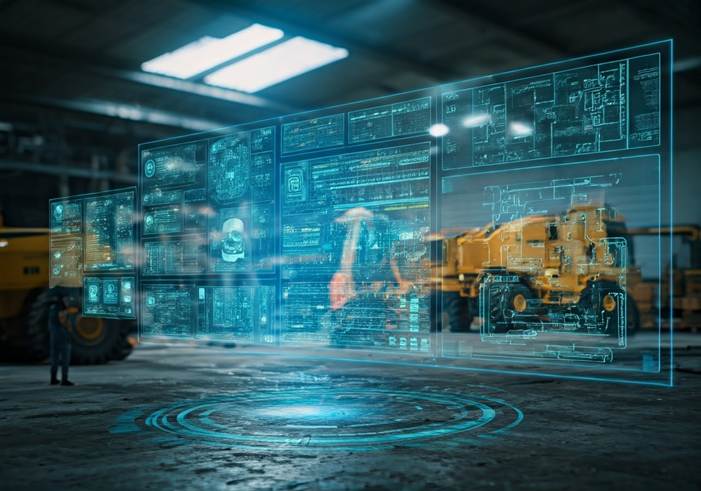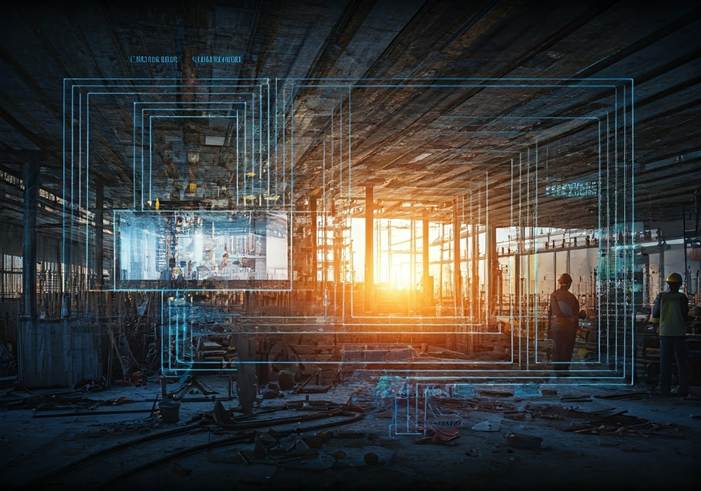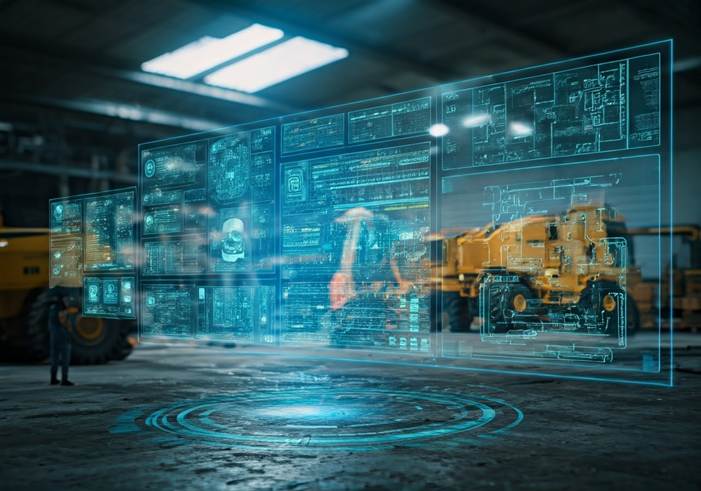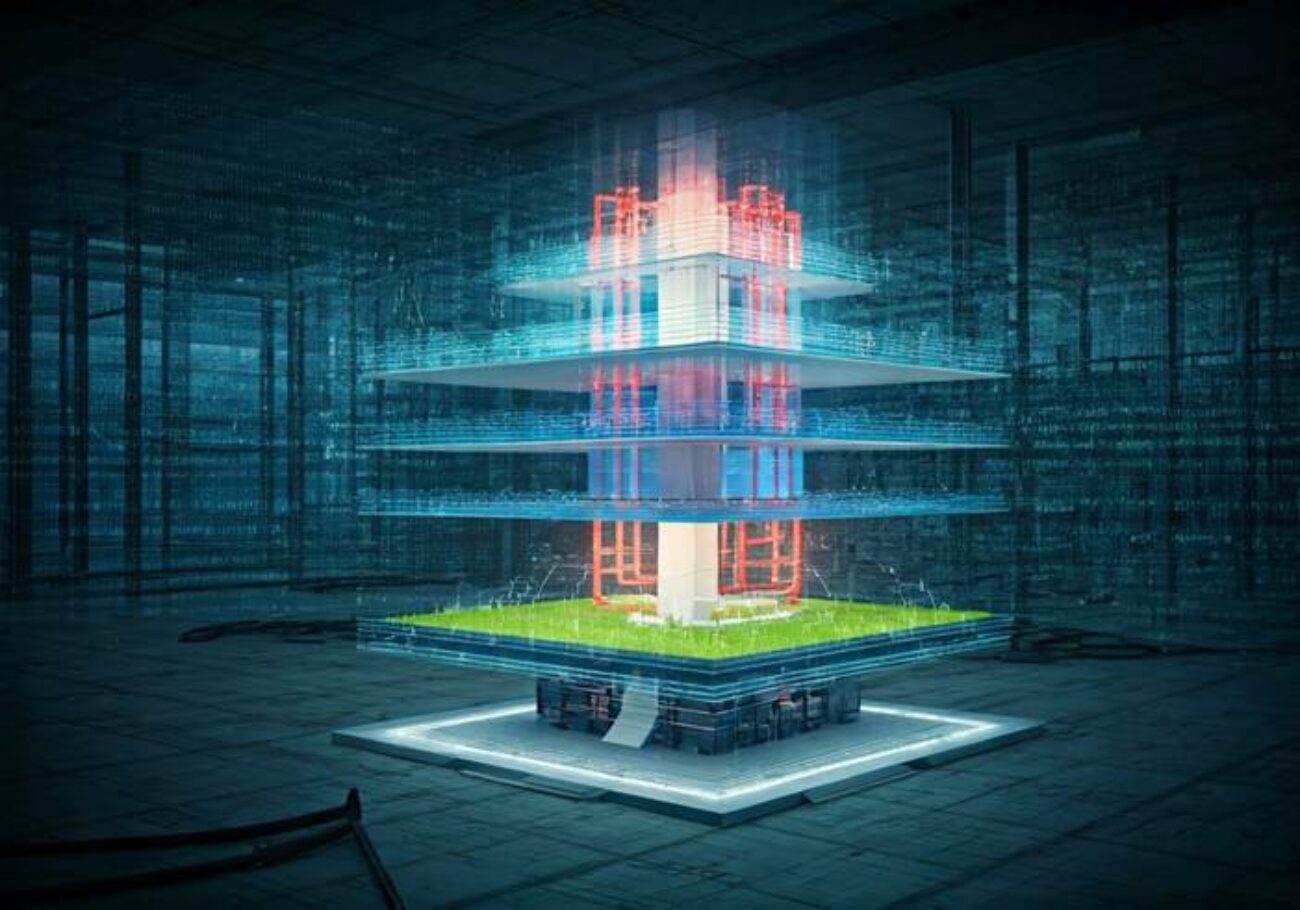Key Highlights
- BIM MEP coordination ensures a clash-free design by identifying and resolving conflicts between MEP systems and structural elements.
- This process improves collaboration among architects, engineers, and contractors, enabling better communication and informed decision-making.
- Implementing BIM MEP coordination leads to reduced project rework, saving valuable time and resources throughout the construction lifecycle.
- By using BIM, projects experience cost savings through minimized errors, optimized material usage, and efficient construction sequencing.
- BIM facilitates sustainable building practices by enabling the design and implementation of energy-efficient MEP systems.
Introduction
In today’s fast-changing construction world, Building Information Modeling (BIM) is a big deal. It gives a complete digital view of a building’s physical and functional features. BIM changes how the design process works. In particular, MEP Coordination is very important. It helps connect design and construction. This improves teamwork among project teams. It also ensures that complex MEP systems come together efficiently.

What is the MEP Coordination Checklist?
The MEP Coordination Checklist is an important document. It helps connect mechanical, electrical, and plumbing (MEP) systems in a building’s design. This checklist makes sure these systems work well with other parts of the building. This way, potential issues are less likely to happen, and the installation process becomes smoother. When people follow this checklist, they can solve conflicts before they become expensive problems on-site.
The checklist usually has key parts, such as when to review models and space for MEP systems. It includes ways to find and fix clashes, along with plans for how to route systems. There is also a need to work with fire protection systems. It highlights important things like easy access for maintenance, checking system height, following building codes, and making clear documents throughout the coordination process.
Building Design Phases
Building design usually follows clear steps, moving from ideas to actual construction documents. Each step adds more detail and clarity. But, with BIM, this process has changed. It is now more flexible and ongoing.
Using BIM, everyone involved can create a virtual model of the building before starting real construction. This helps spot and fix any potential clashes early, during the design stages. This smart way of working cuts down on costly changes and delays. It also makes it easier to make better choices.
Key Components of MEPF Systems
MEPF stands for Mechanical, Electrical, Plumbing, and Fire Protection systems. These systems are very important for any building. They help make sure the building works well, is safe, and is comfortable. Each system has parts that work together smoothly.
Mechanical systems, like HVAC, control temperature, airflow, and air quality. Electrical systems give power, lighting, and support communication. Plumbing systems bring in water and remove waste properly. Fire protection systems are essential, as they include sprinklers, alarms, and emergency exits to keep everyone safe. Good teamwork between these systems is key for a successful project.
The Role of BIM in MEP Coordination
Building Information Modeling, or BIM, has changed how MEP coordination works. It has moved this task from being reactive and done on-site to being proactive and done digitally. BIM lets you create smart, 3D models that show all building systems, including MEP parts.
This digital model helps everyone involved to see how things fit together, find problems early, and arrange systems to work better and be easier to maintain. BIM makes communication smoother and encourages teamwork, completely changing the MEP coordination process.
Introduction to Building Information Modeling (BIM)
Building Information Modeling, or BIM, is changing how construction works. It creates a digital model that brings together different building systems and parts. This helps make project delivery more efficient. BIM software helps find clash detection. This is important for better design coordination among project teams. BIM is key to improving construction processes. It helps people communicate effectively and spot potential clashes early on. By using industry standards and sustainable practices, BIM helps save costs, improve energy efficiency, and ensure the project succeeds.

How BIM Facilitates MEP Coordination
MEP BIM is very important in today’s construction. It helps create accurate models of mechanical, electrical, and plumbing systems along with the larger BIM model. Using BIM coordination, we can find possible conflicts between MEP components and other building parts, like structural beams or design features before we start building.
BIM software has advanced clash detection tools. These tools check the model for any issues and create detailed reports that show potential problems. We can then work together in this digital space to solve these clashes, which helps avoid expensive mistakes on the construction site.
BIM coordination keeps us from facing clashes. It also improves system layouts, making them more efficient and easier to access and maintain. This ensures that MEP systems work well for a long time and are sustainable.
The cost of rework fueled by a single onsite clash is estimated to range from $1500 up to $8000, depending on the disciplines involved and the building stage at which they are detected.
beyonddesign.typepad.com
Understanding MEP Systems in Construction
Mechanical, Electrical, and Plumbing (MEP) systems play a key role in any building. They make sure the building works well, is comfortable, and stays safe. MEP systems manage heating, cooling, lighting, power distribution, and water supply. They are important for how a building operates.
It is important to understand how these systems work together. This knowledge helps in designing and building well. Good coordination of MEP systems leads to easy installation, better performance, and lower risks.
Overview of Mechanical, Electrical, and Plumbing (MEP) Systems
MEP systems are very important in building design and construction. They include mechanical, electrical, and plumbing parts. These systems help buildings work well and are efficient. They cover areas like HVAC systems, fire protection, and energy efficiency. MEP design is about working these key systems into the overall building design. This helps improve performance and supports sustainability.
Good communication between project teams is crucial. Using BIM software helps with coordination, leading to successful MEP coordination. This can result in cost savings and easier project delivery. MEP engineers create digital models that blend different systems together smoothly.
Importance of Seamless MEP Integration
Seamless integration of MEP systems is not just nice to have; it is very important for making strong and eco-friendly buildings. Well-coordinated MEP systems help a lot in energy efficiency. They reduce energy waste and improve how well the systems work.
Also, good MEP integration ensures that the air inside is healthy. It helps manage ventilation rates, controls humidity, and lowers the chances of moisture problems. This is important because moisture issues can harm the health of the people inside.
By following sustainable building practices, we can lower the environmental effects of both building and operating a structure. This also helps create healthier and more comfortable spaces for people to live and work in.
Benefits of MEP Coordination
The benefits of strong MEP coordination in your design and construction workflow are important. First, it reduces the chances of costly problems and rework at the site. This helps keep projects on time and within budget.
Good coordination also improves communication among project teams. This includes architects, structural engineers, MEP engineers, and contractors. With better teamwork, the design and construction process becomes more efficient. This leads to smarter decisions and a better final product.
MEP Coordination Checklist
An MEP Coordination Checklist may look different depending on the project. However, some important parts stay the same. The checklist usually starts with a review of architectural and structural models. This helps make sure the whole project team has the latest information.
Then, the checklist looks at important factors like space for MEP systems and future maintenance needs. Clash detection and resolution, the layout of MEP systems, and working with fire protection systems are also key points in the checklist. These steps help create a safe and functional building.
The CRDR Plugin by Vavetek.ai: A Game-Changer
In BIM MEP coordination, new ideas keep improving how we work. Vavetek.ai’s CRDR Plugin shows us just how far we’ve come. CRDR stands for Comprehensive Clash Resolution Diagnosis Reports. This plugin is great for finding and fixing clashes in BIM models.
The CRDR Plugin makes the coordination process easier. It gives clear details about where clashes happen and helps solve them quickly. By automating the clash detection and diagnosis, the CRDR Plugin saves time. This allows design and construction teams to focus more on making important decisions.
Features of the CRDR Plugin
The CRDR Plugin has many features to help with BIM MEP coordination and improve project results:
- Automated Clash Detection: This tool finds clashes between MEP systems and building elements by itself. This removes the need for long manual checks.
- Comprehensive Reports: It creates simple reports that give clear information on each clash, such as where it is, how serious it is, and what elements are involved.
- Intelligent Grouping: The plugin groups related clashes smartly. This helps you see the main cause of problems and create good solutions.
These features, along with a user-friendly design, help teams in design and construction work together better. This leads to successful MEP coordination, lowers project risks, and boosts efficiency.
The Benefits of Using CRDR for MEP Coordination
The CRDR Plugin is a helpful tool for project teams working on MEP coordination. It brings many benefits that make it worth using. One key benefit is the cost savings from finding and fixing clashes early.
By spotting problems in the digital model ahead of time, the CRDR Plugin helps avoid expensive rework on-site. This keeps projects on budget. Also, the plugin automates tasks, which saves time for project teams. This extra time allows them to tackle other important work.
These advantages lead to a smoother coordination process and better teamwork. In the end, this results in a more positive outcome for MEP coordination efforts.
BAMROC by Vavetek.ai: Automating Clash Resolution
Vavetek.ai is taking BIM MEP coordination higher with a new tool called BAMROC. BAMROC stands for BIM Automation for MEP Resolution of Clashes. It does more than just detect clashes; it also gives smart solutions for resolving them.
This innovative tool uses advanced algorithms and machine learning. It looks at each clash and suggests solutions based on industry standards and specific project needs. This speeds up the coordination process and helps create better design solutions.
How BAMROC Enhances BIM MEP Coordination
BAMROC improves BIM MEP coordination in important ways. First, it not only finds clashes but also fixes them. This change makes BIM more than just a tool for visualizing; it becomes a smart problem solver.
BAMROC uses advanced clash detection methods to find potential issues between MEP models and other parts of the building quickly. Then, it uses its knowledge and machine learning to provide different solutions. These solutions take into account things like space limits, industry standards, and what the project needs.
Because of this automation, MEP coordinators have less stress. They can spend more time on tough design issues and making smart choices. This makes the coordination process better and more precise.
Case Studies: BAMROC in Action
The success of tools like BAMROC is shown through real-world examples. Many construction projects prove how well it works. One example is a big commercial building where BAMROC helped improve design coordination.
The results were impressive. The tool found and fixed over 90% of clashes on its own. This saved time and resources that would have gone to manual coordination. As a result, the project was delivered faster and costs were lower. The project team credited much of their success to BAMROC’s ability to understand complex space issues and suggest smart solutions.
This case shows how BAMROC is changing BIM MEP coordination. It helps project teams work on complicated building projects more efficiently, accurately, and cost-effectively.
Key Steps in Effective BIM MEP Coordination
Effective BIM MEP coordination follows a clear plan to make the process complete and organized. The first step is to perform detailed reviews and checks of MEP design. This important step helps find and fix possible issues early on, resulting in a well-planned project.
Next, the main focus is on clash detection and using good strategies to solve problems. By using the clash detection tools found in BIM software, teams can find mismatches between MEP systems and other building elements. This helps prepare everything for a smooth construction process.
Initial MEP Design Review and Analysis
At this early stage in the design process, it’s very important to look closely at the MEP design. This helps make sure it meets the project’s goals and needs. The review includes looking at system choice, sizing, layout, and following the right codes and standards.
Doing a detailed look at the MEP design early on, along with good communication and teamwork among everyone involved, can help things run more smoothly later. It also cuts down the chances of expensive changes later in the project.
Clash Detection and Resolution Strategies
Clash detection is vital for BIM MEP coordination. It helps find and solve problems before they become serious on-site issues. By using clash detection tools in BIM software, project teams can look at the model and see where MEP systems might interfere with other building elements.
After finding possible clashes, it’s important to create good solutions. This means looking closely at each clash. Factors to consider include how bad the interference is, space limits, and what the project needs. Coordination meetings with all key people are necessary to talk about how to resolve clashes. These meetings promote working together and help make smart choices.
Good clash resolution strategies aim to keep design changes to a minimum. They also work to improve system performance and preserve the architectural vision.
Iterative Coordination and Model Refinement
BIM MEP coordination is not a one-time task. It is an ongoing process that grows as the design develops. As we work on the BIM model, it is important to keep coordinating and adjusting the MEP systems. This helps us make room for design changes, fix any new clashes, and ensure everything works well with other building systems.
Regular meetings about coordination and clear communication help keep everyone on the same page. This way, any updates to the BIM model are shared and applied quickly.
Continuing to adjust and refine the model is key. It helps us keep the BIM model accurate and dependable. It also improves teamwork and results in a project that meets or exceeds what the client wants.
Overcoming Common MEP Coordination Challenges
While BIM helps a lot with MEP coordination, some challenges can still come up. It’s important to tackle these issues early to ensure the project does well. Space limitations in a building’s design can make it hard to fit MEP systems together.
Other challenges arise from tight project schedules and budgets. This means everyone involved needs to work well together and talk clearly. By seeing these challenges and using strong strategies to handle them, we can make the project run more smoothly and lead to better results.
Spatial Constraints and System Interferences
Spatial constraints are a common part of building design. They can make it hard to fit complex MEP systems into a small space. Issues may arise when dealing with low ceilings, working around beams, or running plumbing inside the walls. That’s why good coordination is important.
To tackle these challenges, a smart plan is needed. Using BIM software helps designers see 3D views and better understand the space. This way, they can spot potential problems early and find different ways to arrange MEP systems.
In the end, solving these problems relies on teamwork. Architects, structural engineers, and MEP engineers must communicate openly. When everyone understands the project limits, they can come up with creative solutions.
Adhering to Project Timelines and Budgets
In the fast-moving construction world, sticking to project timelines and budgets is very important. Good MEP coordination has a crucial role in reaching these goals.
Setting up clear ways to communicate and using BIM features helps everyone involved to get up-to-date design information. This lets them work better and find possible problems early.
By tackling these issues from the start through good planning and teamwork, project teams can reduce the chances of expensive delays and stay within budgets.

The Future of MEP Coordination with BIM
The future of MEP coordination is closely linked to the ongoing growth of BIM software. As this software gets better and works well with new technologies, like artificial intelligence and machine learning, we can expect more efficiency and automation in MEP coordination.
These improvements will help design and construction teams handle more complex projects with confidence. This will expand what we can achieve in building design and construction.
Emerging Technologies and Their Impact
The world of new technologies is changing the architectural, engineering, and construction (AEC) industry. BIM software is a key part of this change. By using artificial intelligence (AI), machine learning, and cloud computing with BIM platforms, we are finding better ways to coordinate MEP tasks.
Tools powered by AI improve clash detection. They can find possible issues and suggest solutions based on patterns and best practices. Cloud collaboration platforms help people work together in real time. This makes it easy to share data and manage different versions of documents.
These new developments in BIM software and technology help design and construction teams improve their plans. They make work easier and help complete projects with more efficiency, accuracy, and sustainability.
Predictions for BIM-Driven MEP Coordination
Looking ahead, we can make some guesses about the future of BIM-driven MEP coordination.
First, automation will keep being important. It will help make clash detection and problem-solving easier. This will save time for designers and engineers. They can use that time to work on more difficult tasks.
Second, combining BIM with virtual reality (VR) and augmented reality (AR) will help people experience MEP designs in a new way. This will lead to better understanding and communication about the designs.
Finally, we can expect BIM coordination to be part of the construction process even more. It will go beyond just the design phase. It will include fabrication, installation, and facility management. This will create a connected, data-rich building lifecycle.
Conclusion
In conclusion, BIM MEP coordination is key to connecting design and construction. It makes processes smoother and improves project results. With tools like the CRDR Plugin by Vavetek.ai and BAMROC, the industry experiences new automation for clash resolution and better integration of MEP systems. The future of MEP coordination involves using new technologies and smart BIM strategies. This can change how we build. By addressing challenges and encouraging teamwork, BIM MEP coordination can achieve better efficiency and accuracy in building projects. To stay ahead, use innovative solutions and enhance your MEP workflows for great success.
Frequently Asked Questions
What is BIM MEP Coordination and Why Is It Important?
BIM MEP coordination uses digital models. This helps make sure that mechanical, electrical, and plumbing (MEP) systems fit well into the building design. This crucial role helps avoid clashes and cuts down on rework. It also helps MEP engineers create accurate construction documents.
How is BIM used for MEP workflows?
BIM helps MEP workflows by giving tools to make, check, and work together on 3D models of building systems. This mix allows for better visualization and clash detection. It also makes project delivery smoother by improving the design process of different systems.
How to do MEP Coordination in BIM-based Design?
MEP coordination in BIM means making detailed MEP models. These models work together with the architectural and structural design. Teams hold regular coordination meetings. During these meetings, they review the models, find any clashes, and make sure all systems fit together.
Why is maintenance access important in MEP coordination?
MEP coordination looks at how to access maintenance. It makes sure that mechanical systems, plumbing, and fire safety equipment can be easily reached for regular checks and emergency repairs. This helps the building run smoothly and safely throughout its life.
What tools or software are commonly used in MEP coordination?
BIM software, such as Autodesk Revit and Navisworks, is popular for MEP coordination. These tools help find clashes in designs. They also promote teamwork among users. Additionally, they create detailed reports about clash resolution. This makes the coordination process much easier.
